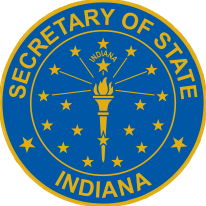Cleaning Up Voter Rolls Will Ensure More Accurate Elections
Contact: Cam Savage
317-232-6533
Media@sos.in.gov
Although most of the attention of the recent session of the Indiana General Assembly focused on what legislation did not get passed, for the second year in a row the legislature did approve important election reforms championed by my office and election administrators around the state.
The most significant reform measure addressed this year provides counties with a mechanism to clean up their inaccurate and inflated voter registration lists.
In 1993, the federal National Voter Registration Act (NVRA) changed voter registration procedures to make it much easier to register to vote and to allow individuals to register at bureau of motor vehicles branches and other government agencies.
The law, often called "Motor Voter," was a well-intentioned effort to open the political process to every eligible voter, especially voters who are already taking time during their busy days to do business with the government. And "Motor Voter" served its purpose, making it very easy to add names of these voters to the voter rolls. The unfortunate consequence of "Motor Voter" was that taking names of voters off the voting rolls by "purging" the voter registration rolls became nearly impossible, even when those voters passed away or moved out of state. Under the federal law, not even an obituary in this newspaper is evidence enough to allow an election administrator to remove a voter from the rolls. Likewise, federal law provides that if a voter does not vote for an extended period of time, even for twenty, thirty, or forty years, that voter's name still cannot be removed.
We now estimate that Indiana's voter rolls may be as much as twenty percent inflated with the names of voters who no longer live where they are listed on the rolls. The inflation and inaccuracy of voter rolls is an invitation for voter fraud. Without an accurate list of voters, it becomes increasingly difficult for election administrators to know who should and should not be voting.
In 2003, the city and town primary and general elections highlighted this problem. In Lake County, ballots were cast by voters who were registered at homes that had been demolished years before to make way for the U.S. Steel Yard baseball stadium. In Madison County, a man was arrested for allegedly submitting fraudulently completed absentee ballot applications. After he applied for the absentee ballots, he would simply wait for the postman to deliver them to the appointed addresses and then swipe them from the mailboxes and fill them out himself.
With the passage of Senate Enrolled Act 72, county officials will now have the ability to conduct their own voter list maintenance programs in compliance with "Motor Voter." Until this year, only the state could conduct these voter list maintenance programs.
Under the new law, if a county receives certain information indicating that a voter no longer resides at the address on the voter rolls, the county can then mail an "NVRA notice" to that voter, asking the voter to confirm this questionable address. The "bad address" information that the county can use to mail this NVRA notice can come from a mailing to all voters in the county. The law also permits returned jury service notices, USPS address information, and certain BMV records to be used as the basis for sending the NVRA notice to the voter.
If a voter does not respond to the NVRA notice or appear to vote at that address, the voter's registration at that "bad address" is reclassified as an inactive registration. After two general elections are held without any activity from the voter at that address, the inactive registration must be removed from the voting rolls.
As a result of better voter list maintenance, we will also have a much more accurate view of how many Hoosiers actually vote. The inflated rolls make it impossible to know what the true percentage of voter turnout really is. In presidential elections between 1964 and 1992, voter turnout in Indiana never dipped below 69 percent. In 1996, the first presidential election after the enactment of "Motor Voter," turnout in Indiana dropped to 62 percent. In 2000, a mere 55 percent of Indiana's registered voters went to the polls. It's clear that the inflated voter registration numbers make it appear that a smaller percentage of us are voting than really are. That discourages people who may not look beyond these percentages from turning out to vote.
The ability for county officials to conduct their own voter list maintenance programs is a critical step in the right direction toward ensuring the accuracy and integrity of our elections. For the first time in a decade, the state is recognizing what most of us already know: county voter registration officials are dedicated to keeping their registration records as accurate as possible. They just need the tools to do their jobs.
Local officials should waste no time in developing a plan to clean up the rolls in their counties in time for the November general elections this year. I call on county officials throughout Indiana to support their county voter registration offices to make this possible.
